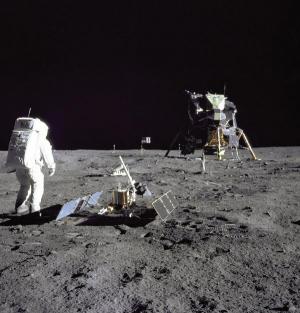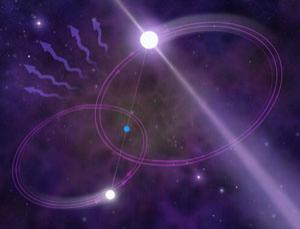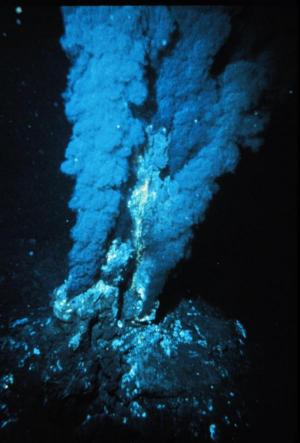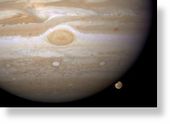
© NASAInstallation of CCRs on the moon during the Apollo 11 mission.
Two researchers from the universities of Valladolid and Alicante are developing a mathematical formula to study the rotation of the moon, taking into account its structure, which comprises a solid external layer and a fluid internal core.
Their work is part of an international study, which has come up with an improved theoretical model about the orbital and rotational dynamics of the Earth and its satellite, and which the scientific community will be able to use to obtain more precise measurements in order to aid future NASA missions to the moon.
Juan J. A. Getino, from the Applied Mathematics Department of the University of Valladolid, and Alberto Escapa, from the Applied Mathematics Department of the Higher Polytechnic School of the University of Alicante, suggest in their work that the Earth and the moon should be considered as "multi-layered" systems. In order to analyse their movements, the researchers have used Hamiltonian mechanics, a kind of classical mechanics used, among other things, to study the movements of heavenly bodies in response to gravitational effects.




